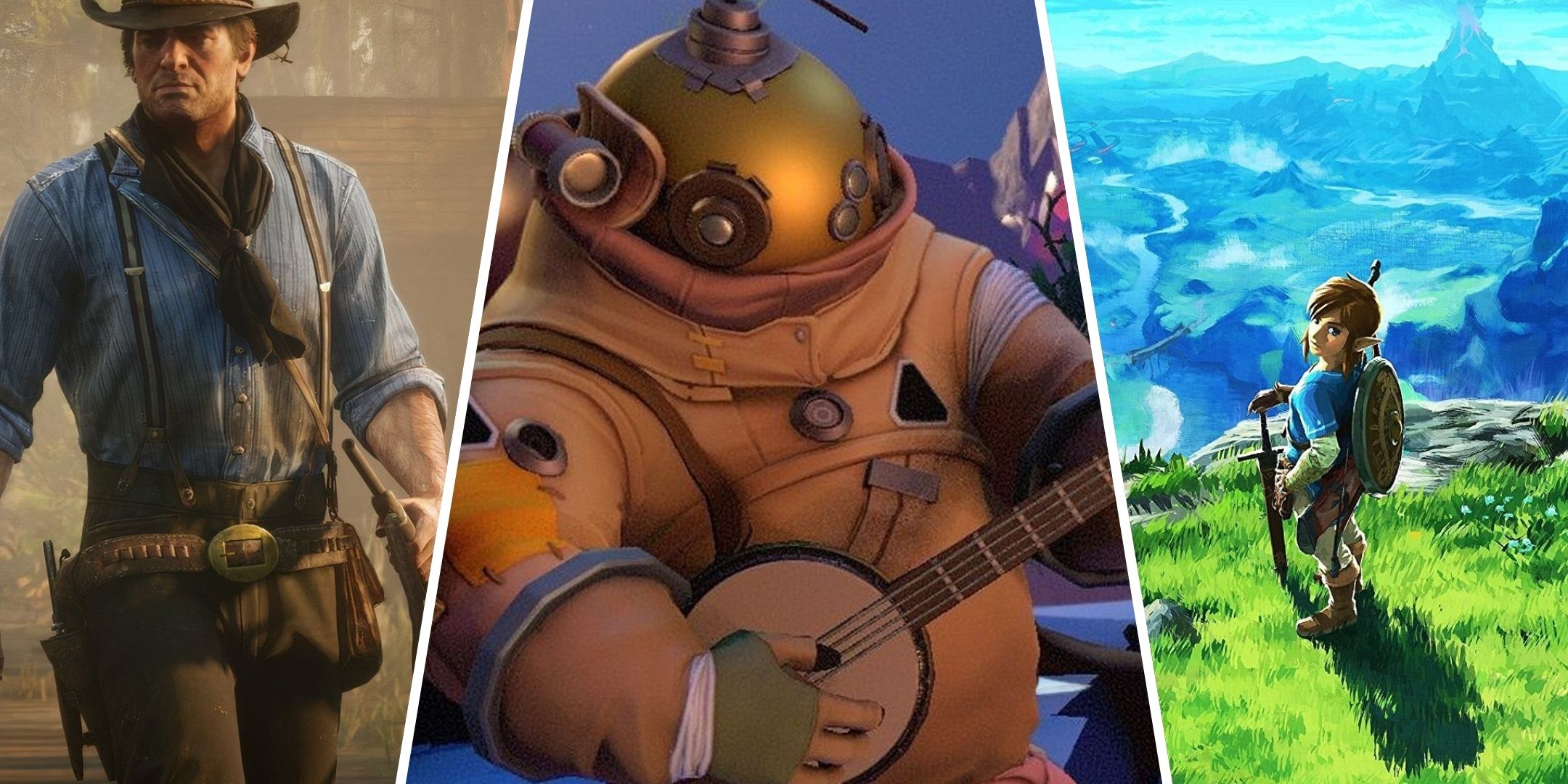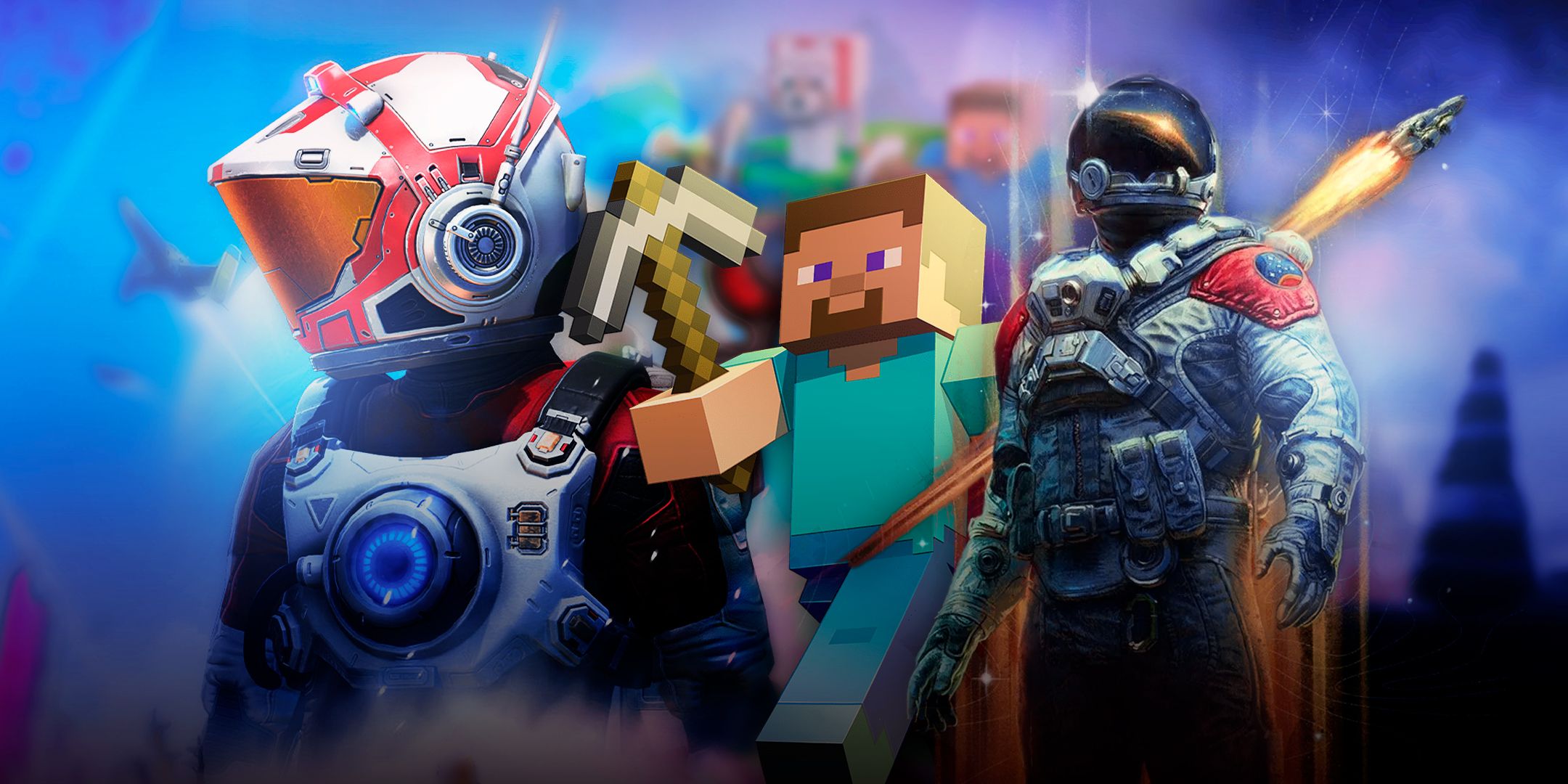Best Open-World Games With Satisfying Progression
Description
Summary
- Horizon Forbidden West prioritizes deliberate exploration and character growth, making every upgrade feel earned.
- Marvel’s Spider-Man rewards players with momentum-based combat, customizable suits, and evolving traversal.
- Dying Light transforms players from wimps to agile wall-runners through skill upgrades and gear improvements.
Open-world games tend to flood players with a map full of question marks, a to-do list longer than a tax audit, and the vague hope that things will start to feel worth it eventually. But some games know exactly how to reward curiosity, make each step feel earned, and turn every upgrade into a small personal victory.

Related
7 Best Open World Games With No Enemies, Ranked
If you want to get the open-world experience, but don’t want to fight off hordes of enemies, these games are perfect.
These aren’t just open worlds to get lost in—they’re systems built to make players feel like they’re genuinely growing, changing, and mastering something. From smooth traversal upgrades to combat skills that snowball into chaos, here are the games that absolutely nail that addictive sense of progress.
7
Horizon Forbidden West
Climbing Feels Better When You Earn It
It takes about ten minutes in Horizon Forbidden West to realize this isn’t just a prettier rehash of Zero Dawn. The sequel doesn’t just open up its world; it makes exploring it feel more deliberate. Players start out grounded—literally—relearning how to survive, scavenge, and fight. But by the time Aloy is gliding off mountaintops, diving into underwater ruins, and overriding giant robot snakes with a souped-up spear, the growth is tangible.
Progression isn’t dumped in the lap. Skills have to be chosen with intent across multiple trees, gear must be upgraded with parts from increasingly difficult machine types, and some traversal tools—like the Shieldwing and Pullcaster—have to be earned through story. The Western wilds are full of places that taunt the player early on, unreachable ledges and locked doors that practically laugh until the right tool or override is unlocked. And nothing beats the feeling of coming back hours later, fully kitted out, and finally cracking them open.
6
Marvel’s Spider-Man
Power Comes With Practice (And Cool Suits)
Swinging across Manhattan doesn’t just feel good in Marvel’s Spider-Man—it feels better the longer players stick with it. The upgrade system leans into momentum, rewarding aggressive play and fluid combos with gadgets that multiply options mid-fight. There’s a rhythm to the combat that gets more complex and satisfying with each ability unlocked, especially when it starts to resemble a perfectly choreographed brawl from the comics.
But the real juice is in the suits. Each one comes with a unique power and can be mixed and matched with different mods to suit different playstyles. From web blossom finishers to spider-bro drone assists, everything starts to feel tailored by the endgame. Even side content feeds into this progression loop—research stations, challenge tokens, and enemy hideouts all offer meaningful rewards instead of just clutter. And somehow, the traversal, which feels incredible on hour one, still manages to evolve by hour twenty with moves like Point Launch boosts that turn the skyline into a playground.
5
Dying Light
From Wimp To Wall-Runner
Nobody starts out feeling cool in Dying Light. Aiden barely survives his first few chases, scrambles up ledges like he skipped leg day, and swings a pipe around like a drunk in a bar fight. But that’s the point. The parkour system doesn’t just exist—it develops. Stamina upgrades, skill unlocks, and movement tech like wall running and vault kicks completely transform how players interact with rooftops and alleyways.

Related
10 Best Open-World Games That Aren’t RPGs, Ranked
Not all open-world games are RPGs. These titles prove exploration, creativity, and action can shine without leveling systems or stats.
By the time grappling hooks and paraglider upgrades enter the mix, traversal feels like second nature. Players go from clinging to ledges in fear to vaulting across districts in a single flow, even during nighttime when the Volatiles come out to play. The satisfaction comes from mastering a city that initially tries to kill the player at every corner. It’s not just skill trees doing the heavy lifting either—survivor rank, inhibitor collectibles, and gear rarity all play their part in making the world more manageable, one rooftop at a time.
4
Assassin’s Creed Odyssey
Nothing Says Progress Like Being Overleveled In A Toga
Assassin’s Creed Odyssey doesn’t exactly hide how much it wants players to grind. But unlike earlier entries, it makes that grind feel like conquering an entire nation, one fort at a time. The leveling system is front and center, with each new tier of gear bringing with it perks, engravings, and those addictive little stat boosts that shave seconds off an assassination or add flair to a Spartan kick.
Exploration feeds directly into growth. Every cave, island, and fort holds something useful, whether it’s an ancient engraving or a boss encounter that drops legendary loot. Even the mercenary system adds a twist to progression, letting players climb their own little bounty hunter ladder with tangible benefits for doing so. The world opens up because the player earns it, both narratively and mechanically. And it helps that Kassandra (or Alexios) ends up feeling like a demigod by the time they’re done stabbing cultists and diving off statues of Zeus.
3
Elden Ring
Getting Lost Is A Skill Tree In Disguise
There’s no quest log pointing the way in Elden Ring, no friendly waypoint saying, “go here for cool loot.” But that’s what makes its progression feel earned. Every boss beaten, every crypt looted, every dragon torched to death in some misty swamp was likely found by accident, and that randomness is part of what makes leveling up feel satisfying.
7:30

Related
The Biggest Open World Games Based On The Size Of Their Maps
When it comes to open world games, more map means more places to explore, and these are the 10 games with the biggest maps of all.
Stat points aren’t just numbers here. They reshape the playstyle. A few more points in Dexterity, and a new katana becomes viable. Invest in Mind, and suddenly Spirit Ashes don’t die in ten seconds. And once legacy dungeons like Stormveil Castle are tackled, players get a sense of just how far they’ve come from dying to dogs in Limgrave. Even the way the map unfolds is part of the progression. Players might ride east expecting a new biome, only to end up in hellish Caelid with rotting monsters and no easy way back. Surviving that? That’s progress.
2
Ghost Of Tsushima
Mastery Looks Like Poetry In Combat
At first, Jin Sakai is a samurai with a code and a katana. By the end of Ghost of Tsushima, he’s a one-man army who can mow down an entire Mongol camp without taking a scratch. But progression here isn’t just mechanical—it’s woven into the story. Jin’s shift from honorable warrior to calculated ghost is reflected in every skill tree branch and armor upgrade.
Players unlock new stances to counter specific enemy types, ghost weapons that complement stealth, and charms that subtly shape how Jin behaves in combat. But perhaps the most satisfying part is the Legend of the Ghost system. As Jin’s fame spreads, enemies become terrified, battles change before they begin, and even duels start to feel different. The island evolves with him. Fog clears from the map as shrines are visited and foxes are followed, each upgrade another step toward restoring Tsushima—or burning it down in style.
1
The Legend Of Zelda: Breath Of The Wild
Curiosity Is The Best Skill Tree
Breath of the Wild never hands out power in the traditional sense. There’s no XP bar to fill or passive stat tree to grind through. Instead, the progression is environmental. Players get stronger by climbing higher, lasting longer, solving trickier shrine puzzles, and learning the rules of a world that quietly punishes impatience and rewards experimentation.
Link starts with little more than an old man’s hoodie and a stick, but it’s not long before he’s launching himself across Hyrule with bomb jumps and paragliding off the backs of dragons. The Great Plateau teaches the fundamentals, but beyond that, everything is optional—and that freedom is what makes the progression so compelling. Whether it’s learning how to shield surf off a mountaintop or discovering how to use metal boxes as makeshift weapons in a thunderstorm, the world itself becomes the upgrade system. And nothing feels more satisfying than solving a puzzle not because it was marked on a map, but because a broken-down ruin caught the player’s eye.

More
8 Open-World Games That Never Really End
The story campaigns of these open-world games eventually come to an end, but the content that’s left over afterward can seemingly stretch on forever.




